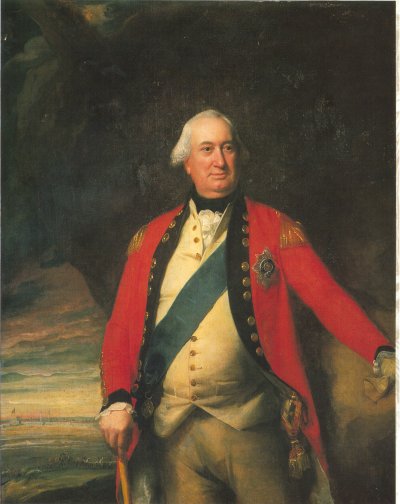Charles Cornwallis (Charles Cornwallis)

Charles Cornwallis, 1st Marquess Cornwallis KG (31 December 1738 – 5 October 1805), styled Viscount Brome between 1753 and 1762 and known as The Earl Cornwallis between 1762 and 1792, was a British Army officer and colonial administrator. In the United States and the United Kingdom he is best remembered as one of the leading British generals in the American War of Independence. His surrender in 1781 to a combined American and French force at the Siege of Yorktown ended significant hostilities in North America. He also served as a civil and military governor in Ireland and India; in both places he brought about significant changes, including the Act of Union in Ireland, and the Cornwallis Code and the Permanent Settlement in India. Born into an aristocratic family and educated at Eton and Cambridge, Charles Cornwallis joined the army in 1757, seeing action in the Seven Years’ War. Upon his father’s death in 1762 he became Earl Cornwallis and entered the House of Lords. From 1766 until 1805 he was Colonel of the 33rd Regiment of Foot. He next saw military action in 1776 in the American War of Independence. Active in the advance forces of many campaigns, in 1780 he inflicted an embarrassing defeat on the American army at the Battle of Camden, commanded British forces in the March 1781 Pyrrhic victory at Guilford Court House, and ultimately surrendered his army at Yorktown in October 1781 after an extended campaign through the Southern states which was marked by disagreements between him and his superior, General Sir Henry Clinton (which became public knowledge after the war).
Despite this defeat, Charles Cornwallis retained the confidence of successive British governments and continued to enjoy an active career. Knighted in 1786, he was in that year appointed to be Governor General and commander-in-chief in India. There he enacted numerous significant reforms within the East India Company and its territories, including the Cornwallis Code, part of which implemented important land taxation reforms known as the Permanent Settlement. From 1789 to 1792 he led British and Company forces in the Third Anglo-Mysore War to defeat the Mysorean ruler Tipu Sultan. Returning to Britain in 1794, Cornwallis was given the post of Master-General of the Ordnance. In 1798 he was appointed Lord Lieutenant and Commander-in-chief of Ireland, where he oversaw the response to the 1798 Irish Rebellion, including a French invasion of Ireland, and was instrumental in bringing about the Union of Great Britain and Ireland. Following his Irish service Cornwallis was the chief British signatory to the 1802 Treaty of Amiens, and was reappointed to India in 1805. He died in India not long after his arrival.
Born
- December, 31, 1738
- United Kingdom
- Grosvenor Square Mayfair, London, England
Died
- October, 10, 1805
- Ghazipur, India
Cause of Death
- fever
Cemetery
- Tomb of Lord Cornwallis
- Ghazipur, India


